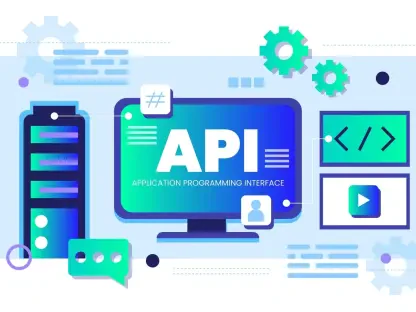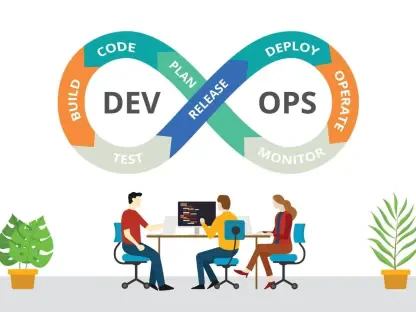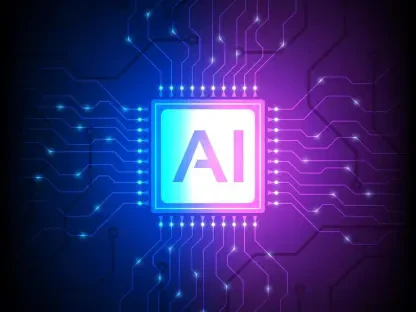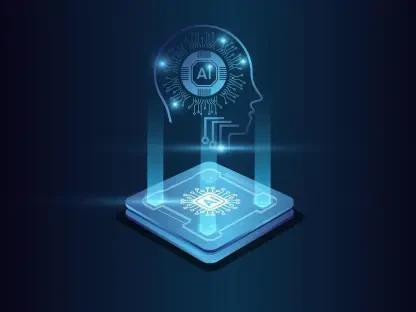In a world where technology constantly reshapes industries, generative AI stands as a beacon of transformative potential, promising enhancements across sectors and challenging traditional technological paradigms. Generative AI has matured into a pivotal force, driving innovation by offering advanced solutions and insights. With AI 2.0, the landscape shifts dramatically, resembling significant technology shifts of history. This discussion aims to dissect generative AI’s multifaceted nature, detailing its evolution, current capabilities, and the societal impact it heralds.
Understanding Generative AI’s Core Principles
Generative AI signifies a revolution, primarily driven by its capability to create data-driven content autonomously. At its heart lies complex neural network systems that have significantly evolved, using layers to simulate human-like learning and reasoning. The emergence of these models has disrupted conventional technological methodologies, offering unparalleled possibilities for text generation, image synthesis, and more. Its relevance in today’s technological landscape is undeniable, as generative AI powers new platforms that redefine how industries operate.
The global technological arena now recognizes generative AI as a cornerstone for future advances. The seamless integration of its principles into real-world applications showcases its continued influence on both innovation and practical solutions, highlighting its crucial role in pushing the boundaries of technology.
Architectural Foundations and Training Dynamics
Neural Networks: The Backbone of Intelligence
Neural network architecture in generative AI serves as its foundational element, enabling machines to learn and adapt like never before. Its design allows for intricate processing, using interconnected neurons that simulate cognitive functions. This architecture ensures superior performance and adaptability, which are vital for generative AI to function efficiently. The significance is amplified by the ability of these networks to process vast amounts of data, offering insights previously deemed unattainable.
The ability to develop complex solutions rests within the depths of neural network design, which is pivotal for any significant advancements in generative AI. These advancements shape progressive steps toward smarter technologies and pave the way for AI-first applications to flourish.
Innovative Data Processing and Training Techniques
Data processing and training techniques are the lifeblood of generative AI, facilitating its growth and development. Techniques such as supervised and unsupervised learning are crucial, allowing AI systems to refine their algorithms and enhance performance metrics. In practical terms, these methods have showcased impressive capabilities in various fields, bridging the gap between human logic and machine efficiency.
Real-world utilization of training techniques stands as a testament to their vital role in AI progress, ensuring machines not only evolve but also operate with accuracy and precision. These systems are pivotal in fostering new technological solutions that continually redefine industry standards.
Cutting-Edge Developments and Innovations
Recent advancements in generative AI underscore its dynamic nature, with emerging trends reshaping its trajectory. Innovations such as GPT models demonstrate heightened intelligence, more refined outputs, and increased applicability across sectors. Additionally, the shift from pre-training Scaling Laws toward inference Scaling Laws offers models the edge to grow in intelligence, optimizing performance while reducing costs.
The industry’s behavior shifts, propelled by consumer demand and technological insights, demonstrate generative AI’s adaptability. Continuous evolution and the adoption of open-source models have generated momentum, affecting dominance in global AI competition. These developments illustrate a commitment to remaining at the forefront of technology.
Practical Applications in Diverse Industries
Generative AI’s utility extends across numerous industries, each benefiting from its innovative solutions. In sectors like healthcare, AI-driven technologies enhance diagnostics and patient care, offering unprecedented insights and accuracy. Meanwhile, in entertainment, generative AI models drive creative content, transforming how media is produced and consumed.
Unique applications in automotive, finance, and energy demonstrate generative AI’s versatility, allowing for efficiency and innovation within traditional frameworks. Fostering growth in these areas not only highlights generative AI’s relevance but also underlines its transformative impact across various professional domains.
Obstacles and Constraints in AI Growth
Generative AI faces several obstacles that can impede its progress, including technical challenges and regulatory concerns. Managing vast data and ensuring ethical adherence pose dilemmas that can hinder widespread adoption. Furthermore, market limitations, like economic disparities and knowledge gaps, contribute to the constrained deployment of generative AI technology.
Efforts to overcome these challenges require concerted attention, with ongoing development directed at circumventing hurdles through technological refinement and adaptive innovation. The drive to address these constraints underscores the industry’s determination to achieve seamless integration of generative AI solutions into everyday life.
Projecting AI’s Forward Trajectory
Generative AI’s future offers promising advancements, with continued breakthroughs anticipated in intelligence augmentation and industry penetration. Potential developments envision AI technology achieving deeper societal integration, fostering substantial economic growth across sectors, and enriching consumer experiences.
The technology’s potential impact on industries remains expansive, needing strategic planning and adaptation to capitalize on evolving AI dynamics. Generative AI’s path is set toward enhancing existing frameworks and creating new paradigms for technological capability and efficiency.
Summary Verdict
Generative AI’s journey thus far has marked an era of transformation, with notable advancements and applications signaling its influence on modern industries. Its complex, dynamic nature offers a multitude of possibilities, yet requires navigation through obstacles for seamless integration. As technology evolves, generative AI stands ready to redefine sectors, promising a future of substantial innovation and industrial revitalization through strategic implementation and thought leadership. The future now hinges on adapting to its pace and harnessing its revolutionary potential effectively.









